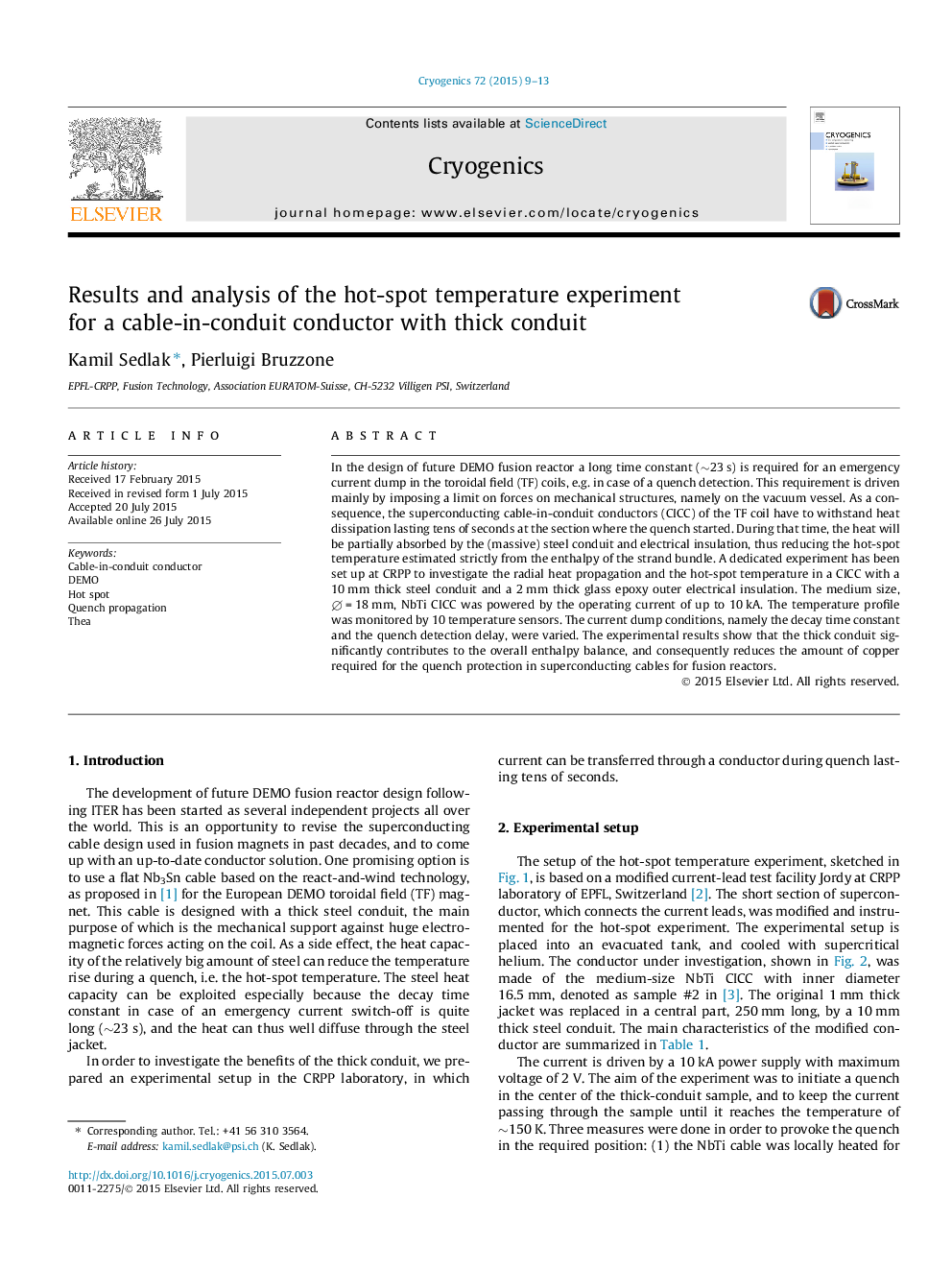| کد مقاله | کد نشریه | سال انتشار | مقاله انگلیسی | نسخه تمام متن |
|---|---|---|---|---|
| 1507276 | 993901 | 2015 | 5 صفحه PDF | دانلود رایگان |
• Transverse heat propagation studied in a 1D thermal-hydraulic program (Thea).
• Thick conduit in fusion magnet conductors greatly reduces hot-spot temperature.
• Neglecting heat capacity of conduit exaggerates the required amount of stabilizer.
• Adiabatic calculation (instant heat diffusion) underestimates hot-spot temperature.
• The simulation of heat diffusion through conduit agrees with the experiment.
In the design of future DEMO fusion reactor a long time constant (∼23 s) is required for an emergency current dump in the toroidal field (TF) coils, e.g. in case of a quench detection. This requirement is driven mainly by imposing a limit on forces on mechanical structures, namely on the vacuum vessel. As a consequence, the superconducting cable-in-conduit conductors (CICC) of the TF coil have to withstand heat dissipation lasting tens of seconds at the section where the quench started. During that time, the heat will be partially absorbed by the (massive) steel conduit and electrical insulation, thus reducing the hot-spot temperature estimated strictly from the enthalpy of the strand bundle. A dedicated experiment has been set up at CRPP to investigate the radial heat propagation and the hot-spot temperature in a CICC with a 10 mm thick steel conduit and a 2 mm thick glass epoxy outer electrical insulation. The medium size, ∅ = 18 mm, NbTi CICC was powered by the operating current of up to 10 kA. The temperature profile was monitored by 10 temperature sensors. The current dump conditions, namely the decay time constant and the quench detection delay, were varied. The experimental results show that the thick conduit significantly contributes to the overall enthalpy balance, and consequently reduces the amount of copper required for the quench protection in superconducting cables for fusion reactors.
Journal: Cryogenics - Volume 72, Part 1, December 2015, Pages 9–13
